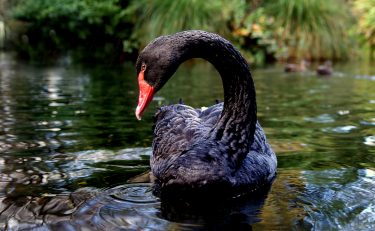
Black swan events are rare and surprising occurrences that happen without notice and often wreak havoc on society. The metaphor has been used to describe banking collapses, devastating earthquakes and other major surprises in financial, social and natural systems.
A new analysis by the University of Washington and Simon Fraser University is the first to document that black swan events also occur in animal populations and usually manifest as massive, unexpected die-offs. The results were published online March 7 in the Proceedings of the National Academy of Sciences.
“No one has really looked at the prevalence of these black swan events in animal population abundance before,” said lead author Sean Anderson, a UW postdoctoral researcher in aquatic and fishery sciences. “People associate the phrase with financial market crashes, and being able to take that term and apply it to another system gives context about what we’re seeing in animal populations.”
The researchers analyzed data from more than 600 animal populations, including mammals, birds, fishes and insects. They found that drastic changes in populations occurred in about 4 percent of the animals they surveyed, most commonly in birds.
Read more at UW Today »
